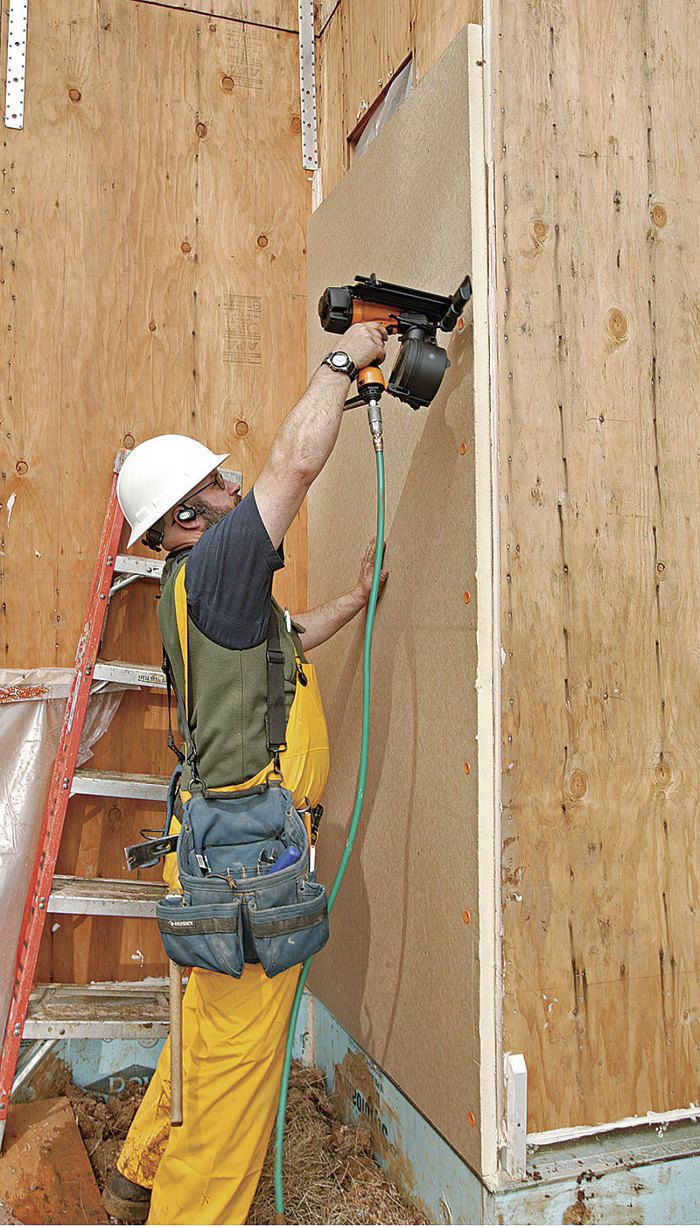Can exterior foam be added to a wall that has an interior vapor barrier?

Q:
I need to remove and replace a flanged window on my house in southern Kentucky. The 2×4 walls are sheathed with OSB and have a plastic vapor barrier on the interior, with fiberglass batts in the cavities. Since I have to pull apart that section of the house to replace the window, I thought it might be a good chance to boost my insulation by adding a 1/2-in. layer of rigid foam over the sheathing before reinstalling the siding and then continuing that approach on the other sides of the house as time allows. My fear is that adding foam to the outside and having the vapor barrier on the inside might trap moisture in the wall cavity. Is that a concern?
Don Gilbert, via GreenBuildingAdvisor.com, None
A:
Yes, you can put rigid foam on the exterior of your walls. Fortunately, in your mild climate zone, you don’t have to worry about possible moisture accumulation in your walls as a result of using such thin foam. Further north, you would certainly need thicker foam to keep your wall sheathing above the dew point during the winter. The main disadvantage of choosing such thin foam in your climate zone is poor energy performance; you would get much better performance if you chose foam that’s 1-1/2 in. or 2 in. thick.
Although it would be better if the poly weren’t there, the fact is that tens of thousands of Canadian homes with interior poly have been retrofitted with exterior rigid foam, and there haven’t been any reports of widespread problems. According to building scientist John Straube, all indications show that these retrofits aren’t as risky as some people fear, and he believes that these homes likely will be fine.
That said, the installation of exterior foam is not advised on any home that has suffered wet-wall problems like leaking windows, condensation in stud cavities, or mold until the causes of the problems are identified and fixed. If you plan to install exterior foam during a siding-replacement job, keep an eye out for evidence of moisture problems when stripping the old siding. Investigate any water stains on housewrap or sheathing to determine whether the existing flashing was adequate.
If there is any sheathing rot, determine the cause—it’s commonly a flashing problem, but condensation of interior moisture is not impossible—and correct the problem.
Adding a rainscreen gap between the new rigid foam and the siding will go a long way toward avoiding future moisture problems in your walls. Of course, it’s important to be meticulous with your details when you install your new water-resistive barrier (WRB) and window flashing.
Once your retrofit work is complete, it’s also important to keep interior relative humidity within reasonable levels (below 35% or 40%) during the winter. Never use a humidifier.
It’s OK to put foam over your wall sheathing, even if you have an interior vapor barrier, but keep these four things in mind:
- Be sure that your foam is thick enough to keep the wall sheathing above the dew point in winter. (Read more on this topic at FineHomebuilding.com/ extras.)
- As the siding is being removed, inspect the existing sheathing carefully for any signs of water intrusion, and correct any flashing or housewrap problems.
- Install rainscreen strapping so that there is a ventilated gap between the new exterior foam and the siding.
- Keep your interior humidity under control during the winter; if the interior humidity gets too high, operate your ventilation fan more frequently.
Fine Homebuilding Recommended Products
Fine Homebuilding receives a commission for items purchased through links on this site, including Amazon Associates and other affiliate advertising programs.

Staple Gun

Disposable Suit

Great Stuff Foam Cleaner

























View Comments
I would like to add 2 layers of rigid foam Owens Corning foamular 250 which I understand compresses very little, but should I be concerned that my LP siding could slump? Has anyone experienced slippage between the 2 layers of rigid foam?....thanks,
Wouldn't putting a rain screen between the foam and the sheathing somewhat defeat the purpose of the foam by letting air circulate in the gap?